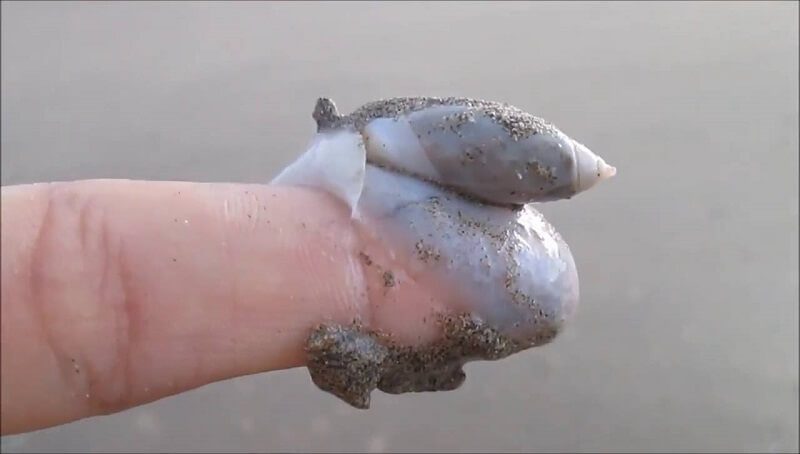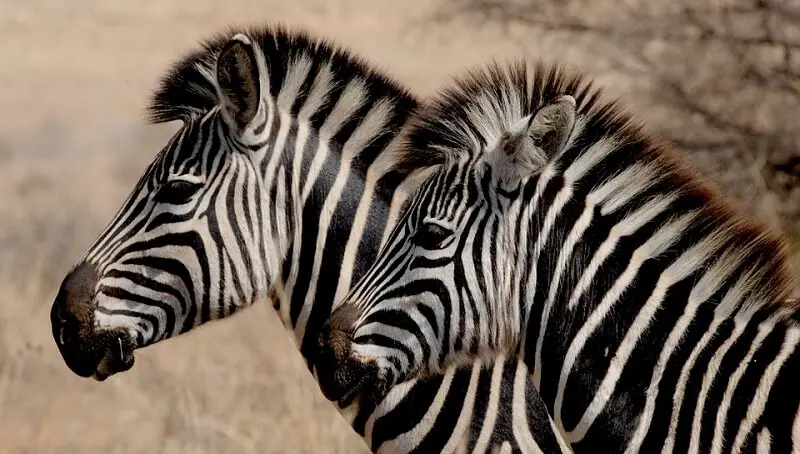Summer is the period of the year when snails invade gardens, parks and can be seen on the banks of ponds, but also on the sea sand. Snails, of different shapes and sizes, are part of the surrounding world and it’s worth discovering new things and curiosities about them.
So far a few thousand snail species have been discovered! Some end up weighing up to a few kilos, others have to be looked at with a magnifying glass. The world’s largest snails live in California. The species’ “giants” can reach up to 1 kilo! About half of the species live in water, either sweet or salty.
But Do Snails Bite?
People often wonder if these creatures can bite their skin or harm them in any way. For example, the slug is fed mainly with plant leaves and organic matter which is dead and degraded by the use of special teeth. So, do snails can really bite? Yes, slugs can bite, because even though snails have a poor view, they have a stunning smell so, they will recognize danger.
Below are some snail facts you need to know:
- There are several species of snails: The earth snail, the sea snail, and snails living in freshwater.
- Snails enter into the shell to defend themselves.
- You can tell the age of a snail by the size of the shell.
- Snails are night creatures, which means most of their activities take place during the night.
- Snails have a really impressive power. They can lift up to 10 times their body weight in an upright position.
- The largest earth snail is the African giant snail (Achatina Achatina). The largest earth snail recorded was 30 cm long and weighted almost 0.9 kilos.
- The average life span of a snail is between 2 and 5 years.
- The speed of a snail is approximately 1,25 to 2 cm per second.
- The enemies of the snails are mainly rats, turtles, and some species of birds.
- There are at least 200.000 mollusk species, including snails, although only 50.000 are classified.
Can a snail bite be fatal to humans?
Ampullariidae originate from the fresh waters of the tropical areas and grow very easily in marshlands, lakes, or flowing waters. The snails carry parasitic worms that can infect humans with a disease called schistosomiasis. It is also called snail fever or swimmer’s itching. The symptoms of the disease include abdominal pain and blood in secretions, depending on the affected area of the body.
Schistosomiasis is a parasitic disease caused by flatworms (trematodes) of the genus Schistosoma. After malaria and intestinal helminthiasis, schistosomiasis is the third most common tropical disease in the world, with schistosomiasis being a major source of morbidity and mortality for developing countries in Africa, South America, the Caribbean, the Middle East, and Asia.
Where does a snail live?
The snail is found on all continents with a possible exception: the Antarctic. There are marine species as well, living in the quiet waters of the South Pole. The snail is found in a variety of living environments and especially in areas where there is plenty of vegetation.
It is a medium-large mollusk that is divided into three groups: earth snail, saltwater snail, and freshwater snail.
Most snail species prefer places with high humidity levels and temperatures not too high. This means that they don’t adapt very well to places where it is very hot. If they are put in an environment with these conditions, they tend to live in damp and dark places and come out mainly at night when temperatures are relatively low.
It is important to note that the snails do not remain static in the same habitat, but are in constant movement. This is because they can establish their home anywhere using their protective housing.
What Animals eat snails?
Beetles, caterpillars, flies, mites, snakes, mice, frogs, tortoises, snakes, other snails, and various other birds, reptiles, and amphibians are all natural predators of snails. Sometimes curious cats or dogs eat snails too. People also consume a significant amount of snails as delicacies.
You might also ask yourself whether deer can swim, if octopuses have bones, or if koalas are dangerous.
Snails are a very common prey for many animals, because they are extremely slow, making them an easy target. Since snails are small and easy to catch, it’s common for larger predators, such as frogs, tortoises, snakes, and birds, to eat many snails in one go. Snails are a popular target in the shadowed park areas where ducks and geese are located.
Do snails have teeth?
You think snails are ordinary creatures, but they aren’t. Some species have incredible features, despite the slowness they display. At the same time, it is interesting to find out that they have about 15.000 teeth called Radula, a fact less known by people. They are directed inwards, allowing the snail to grasp and swallow food easily.
The number of teeth is not the only amazing characteristic of the snail. They change their teeth just like sharks; new rows of teeth grow in the back of their mouth and gradually move outward to replace the used ones. These rows of teeth turn into a hard plate that resembles a file that helps the snail to pick up and chew the food.
The most gifted in terms of teeth is probably the squashed snail, which lives in the sea. Its teeth are made of proteins hardened by mineral nanofibers, known as goethite. A study revealed that these fibers are stronger even than the spider’s web. That means it could be the most resistant biological material on Earth.
Are Snails Poisonous?
The Conus snails are predators, attacking and paralyzing their prey by venom, injected through a special organ designed as a harpoon.
Occasionally, they can be dangerous to humans too, because they can sting them by injecting venom. In the case of larger snails, the attack may even be fatal to humans.
Studying some species of snails of the genus Conus, scientists at the Royal Institute of Technology in Melbourne, Australia, discovered that their venom contained a cocktail of substances (peptides) with analgesic properties, which could one day replace the commonly used morphine.
The extraction of analgesia substances from the venom and their conversion into a useful medicine could happen, according to specialists, in about five years.
A Snail’s Bite: Is it painful? Does it hurt?
As I mentioned above, snails have about 15,000 teeth called Radula. If you are holding a garden snail, don’t be afraid; its bite doesn’t hurt, you’ll feel just like sandpaper is scraping on your skin.
The only snail that can forcefully bite your skin and its bite is really painful is a tropical marine snail, called the cone snail. Once they bite and attach a human it might be really challenging to remove them. This species feeds on other species of snails as well. The cone snail’s bite can be fatal to a human due to its powerful venomous sting.
How Do Snails Eat?
 Although they seem to have only horns, they have a small mouth, with denticles that are used to break the food and even scrape the rocks to obtain calcium. It is said that snails make a lot of noise when they eat, which makes them seem as they use their teeth, but in reality, they make that noise when they swallow through their file teeth.
Although they seem to have only horns, they have a small mouth, with denticles that are used to break the food and even scrape the rocks to obtain calcium. It is said that snails make a lot of noise when they eat, which makes them seem as they use their teeth, but in reality, they make that noise when they swallow through their file teeth.
The snail is greedy. It minces the leaves with its small teeth, on the top of their mouth and on the lower lip, gathered together like a grater. If you put a snail on paper, overnight you will hear it as though it were mice.
As autumn comes, they will be looking for a shelter. They will look to sink into the ground through the moss, entering their shell and closing it with a lid. In this period, they are hidden, not moving, they are breathing slowly, and their heart beats slowly until spring days come again.
The snail is a grass eater and eats mainly vegetation like leaves, stalks and flowers. Larger snail species are known to be predators but not omnivorous and, in some cases, even carnivorous.
Do Snails Bite Humans?
The main reason why the snails bite a human is because they are hungry. If they are hungry, they will try to eat anything that looks like a vegetable or fruit.
When you pick up a snail, they can pierce your skin, because due to the lack of jaw they will mistake human flesh for vegetables. Although, snails have a lot of teeth, they serve only for eating vegetables and fruits.
Can snails be aggressive?
The extremely unusual aggressive behavior of snails has been observed in Japan and the far East of Russia. In two different species it was found that they do not retreat in fear in their shells when they feel a predator around, but attack it using their shell. Until now, it was thought that the snails had a passive defense, hiding in their hard shell.
As species, they also differ from a genetic point of view. Scientists believe that this defense mechanism has evolved independently, showing shell adaptations that allow them to use it to strike.
Conclusion: Do snails bite?
Now that you reached the bottom of the article, you know that most snail species’ bites are not dangerous, even though they forcefully bite and have a huge number of microscopic teeth under their tongues.




